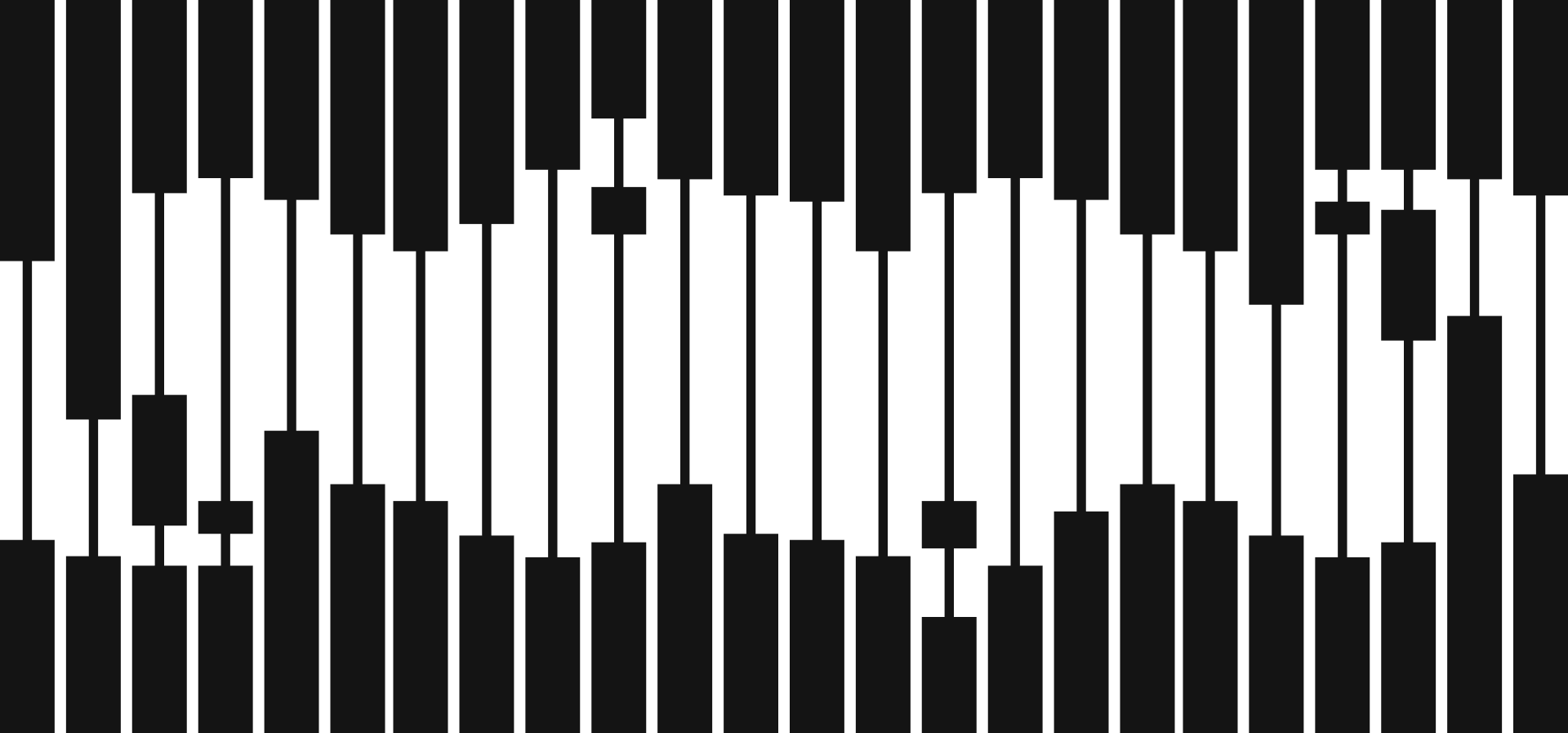
You trade – we fund up to $200k
Trade with support. Entry from $24.
Why To Choose Supertrade?

150+ most popular and profitable trading assets
User-friendly interface with professional trading features

Up to 95% Profit Split
You keep from day 1. No scaling tiers, no hidden cuts

Instant Funding. Skip the challenge
$50K live account in 60 seconds
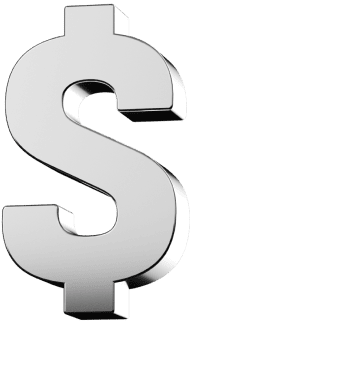
Entry from $24
Start with $200K capital. Lowest price in the industry
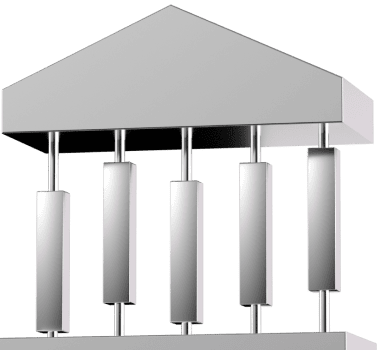
Trade with top-tier liquidity providers
Trade with real banks, no market-making tricks
How it Works
Follow simple steps to get funded and trade profitably.
Choose a Funding Model
Start a 2-Phase Challenge with just $24 or get $100K capital in 60 seconds with Instant Funding.

Pass the Challenge
Prove your skill in 2 phases — hit profit targets while staying within drawdown limits. No time pressure.

Master the Live Account
Trade smart and earn big with 150+ assets.
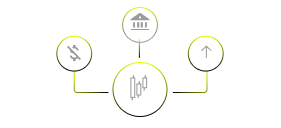
Withdraw profits
Receive your share of the profits directly to your crypto wallet every month.
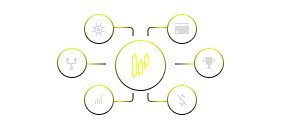
How Much You Can Make?
Make a living as a full-time proprietary trader without risking your own capital. Based on the statistics of our traders receiving payouts, they have an average monthly profit rate of 5.72%.
Estimate Your Profits!
Account Size:
Profit Rate
Take Home (On 90% Profit Split)
4.80%
Buckle Up, Your Journey Starts Here
We built our platform for maximum convenience, offering flexible account options to suit every trader. Choose 2-Phase Challenge to prove your skills step by step, or go Instant Funding for immediate access to a fully funded account. Whichever path you take, you trade with confidence on our transparent A-Book execution, designed to support your growth.
Fee Refund
Yes (after first payout)
Starting Balance
$2,500
Profit Targets
6% phase 1, 8% phase 2
Profit Split
80%
Daily Limit
Phase 1/2 – 7%, Live – 5%
Total Limit
Phase 1/2 – 7%, Live – 10%
Trading Duration
Unlimited
Platforms
YourFintech, MetaTrader 5
Leverage (Forex)
Up to 1:100
Leverage (Metals, Oil)
Up to 1:50
Leverage (Crypto)
Up to 1:2
Leverage (Indices)
Up to 1:50
Leverage (Stocks)
Up to 1:2
News Trading
Account size:
$2,500
Price:
$24
Are you a new customer?
Get an even bigger 20% discount on your first purchase!
Challenge Completion Time
Trading Leverage (Details)
Hold Over Weekend
Trade Through News
Payouts to all over the world
OVER $2 MILLION
Earned by Traders at SuperTrade
Designed for beginners and pros
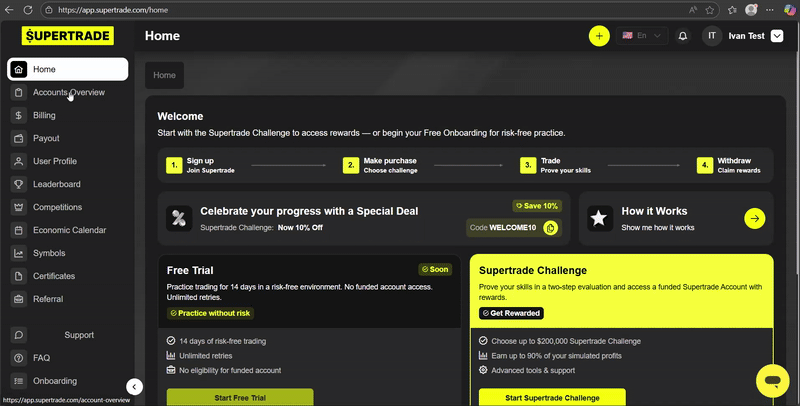

Learn from the TRADING ACADEMY OWNERS for free
Paul Sampson is a trader and market strategist known for his precision, discipline, and deep understanding of market cycles.
As part of DataDash, he focuses on macro analysis and trade entry strategies, turning complex economic signals into clear, actionable insights. His style is built on risk control, structure, and logic over emotion. Combining experience from both traditional finance and digital assets, Paul helps traders think bigger and act faster. His analysis isn’t just numbers — it's a system for seeing the market as a living, breathing organism.
Happy Members
2,406+
Since Lanch
7yrs
Review Rare
4,8
Our super trading curators

Mo Raw
Mohammed Rawaha is a crypto market analyst known for his sharp understanding of volatility and liquidity flows. At KnightRon Crypto, he breaks down market cycles and identifies high-probability entry points with clarity and precision.

Ahm Riz
Disciplined trader focused on structure, risk management, and actionable setups. Through KnightRon Crypto, he helps traders interpret price behavior and navigate the market with confidence and consistency.

Traders Are Raving About SuperTrade
Real traders. Real payouts. See why SuperTrade is the fastest-growing prop firm.
From MetaTrader to SuperTrade
Switched from trading solo on MT4 to SuperTrade. The funding model gives me real motivation.
Date of experience: 2025-07-07
Quick payouts, no hassle
Got my first payout last week, faster than I expected. SuperTrade is definitely doing something right.
Date of experience: 2025-05-06
I liked it
I liked it, but I think you guys need more education videos and step-by-step how to use the platform for new traders.
Date of experience: 2025-07-09
Best decision I’ve made this year
I was skeptical at first! Too many prop firms out there promising the world. But SuperTrade actually delivered. The challenge was tough but fair, and the payout process? Smooth as butter. Already planning to scale up my account. If you’re serious about trading, this is the place to be.
Date of experience: 2025-03-05
Made $800 on my first week!
I wasn’t expecting big numbers right away, but my first week on SuperTrade was insane. I focused on EUR/USD, caught a good trend, and ended up with $800 profit. Already thinking of scaling up.
Date of experience: 2025-05-19
Fast cryptocurrency deposit!
I was kinda nervous about depositing with crypto, but it was honestly super quick. Transferred USDT, and within two hours, my account was ready, and I was already starting the challenge. No delays, no stress.
Date of experience: 2025-05-19
Withdrew profits in 7 minutes. No joke
One of my biggest fears with prop firms was withdrawals — I kept hearing horror stories. But I took the chance, and after making consistent profits, I hit the withdraw button… and my funds arrived in 7 minutes. No weird delays, no excuses.
Date of experience: 2025-03-05
Not many crypto and commodities pairs
SuperTrade delivers standard prop trading features, but they really lack several assets on the Crypto and Commodities side. I had to trade crypto pairs I didn’t follow, so I lost my challenge. Also, the 2-step challenge is a bit strict. I should admit they provide nice TA, but it’s not for me.
Date of experience: 2025-06-05
Global Presence, Dedicated Team

SuperTrade is powered by a global team of over 80 dedicated professionals with extensive experience at Central Banks and the world’s leading proprietary trading firms.
Frequently Asked Questions
1
What is trading?
2
What are financial markets?
3
What is a trading instrument?
4
What is a trading terminal?
5
What is a trading account?
